May 29, 2025 | 10:19 GMT +7
May 29, 2025 | 10:19 GMT +7
Hotline: 0913.378.918
May 29, 2025 | 10:19 GMT +7
Hotline: 0913.378.918
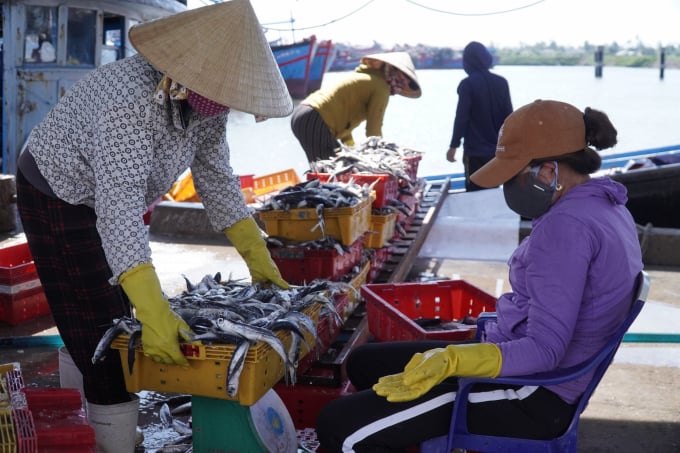
Seafood purchased by traders in Quang Ngai province got their prices decreased by about 30% compared to before. Photo: N.D.
Implementing measures to prevent Covid-19, most restaurants and food service establishments in Quang Ngai province are temporarily closed. Accordingly, the demand and prices of seafood products decrease.
At Tinh Hoa fishing port (Quang Ngai city), many boats fishing offshore have just arrived at the port to sell seafood to traders. However, the reduced price of seafood has made fishermen worry.
According to fisherman Nguyen Ngoc Du (residing in Tan My village, Nghia An commune, Quang Ngai city), owner of the fishing boat Qng 97110TS, he and eight friends on board had just docked after a 20-day long sea trip at Truong Sa fishery site, obtained about 6 tons of flying fish.
"Compared to the Covid-19 pre-epidemic, the selling price of seafood of all kinds has decreased. Take this flying fish for example, the lowest was VND 25,000/kg, but now it's only even VND 20,000/kg. After selling, minus the cost of fuel, ice, and essentials purchased before going without a loss and to be able to share with the crew is already considered good", said Mr. Du.
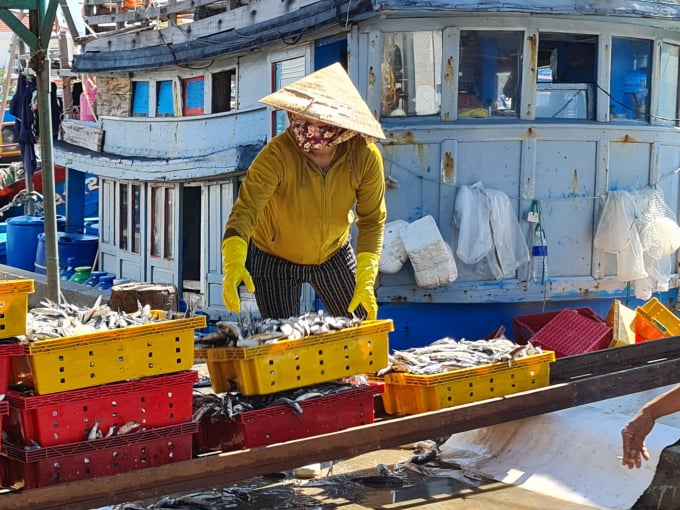
The price dropped, and fishermen also faced difficulties in consumption when currently the catch was only sold in the province, while local demand also dropped sharply. Photo: L.K.
Fishing in the near-shore area is increasingly difficult due to the depletion of seafood resources. Through research, it is known that the decrease in seafood prices not only affects fishing boats operating near and far from shore, but also affects seafood purchasing and processing establishments. According to seafood purchasers, due to the impact of the Covid-19 epidemic, the fish caught by people is mainly consumed within the province, unable to consume outside of the province.
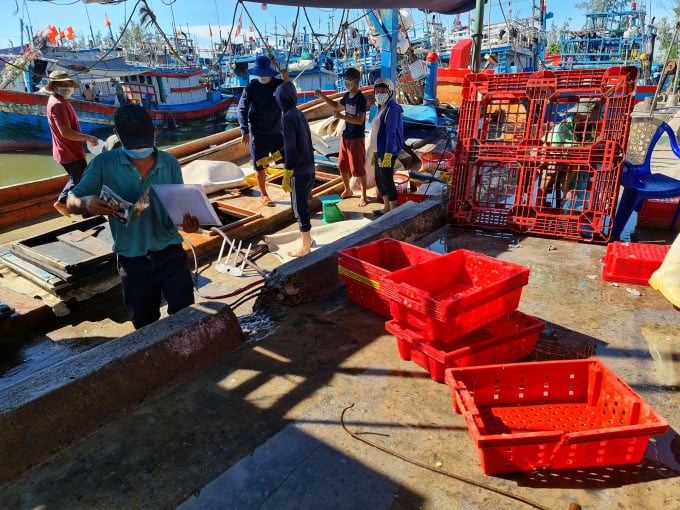
Affected by the Covid-19 epidemic, many fishing vessels returned only to suffer losses. Photo: N.D.
Meanwhile, the closure of some markets and restaurants has caused a sharp drop in consumption. Prices of seafood products are down about 30% compared to the previous period.
For half a month now, Mr. Tran Van Lai (residing in Khe Tan village, Tinh Khe commune, Quang Ngai city) has temporarily stopped going to sea.
“From the day the epidemic broke out, the city applied Directive 15, then Directive 16, so I stayed home. Going back and forth to sell outside the province is also difficult, selling in the market is prohibited due to the epidemic. Now, we just hope the epidemic passes quickly, life returns to normal, and prices are stable, then we will continue to go to the sea", said Mr. Lai.
The Covid-19 epidemic, which has heavily affected market prices, also made many fishermen in Quang Ngai province hesitant to set sail.
According to the leader of Quang Ngai Department of Agriculture and Rural Development, at present, the consumption of aquatic products is facing difficulties and prices are dropping, causing people to suffer great economic losses, affecting the lives of seafarers.
Fishing ports in Quang Ngai are no longer as busy, being gloomy and deserted like never before. As shared by Mr. Bui Van Khoi, Head of Tinh Hoa Fishing Port Management Board: From the beginning of 2021 until now, fishing boats have been exploiting inefficiently due to the depletion of aquatic resources.
Translated by Samuel Pham

(VAN) Ms. Nguyen Thi Dung, Deputy Director of Ngoc Hoang Cooperative, shared about the journey of bringing dragon fruit to Europe, achieving annual revenues in the billions of VND.

(VAN) Bamboo products from Thang Tho Bamboo Cooperative have reached many countries around the world, while also creating jobs for local workers.

(VAN) The Management Board of Con Dao National Park reported that a green sea turtle, tagged in the Philippines, has traveled thousands of kilometers to lay 84 eggs on Bay Canh Islet.
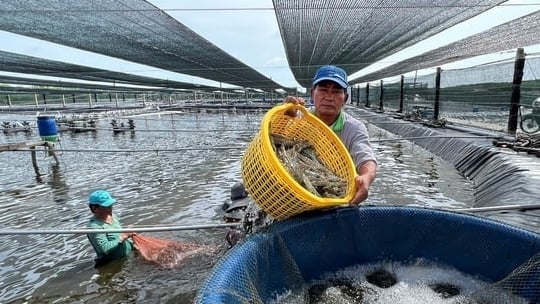
(VAN) Green technology is paving a new path for sustainable aquaculture in the Mekong Delta in particular and across the country in general, helping reduce emissions and adapt to climate change.
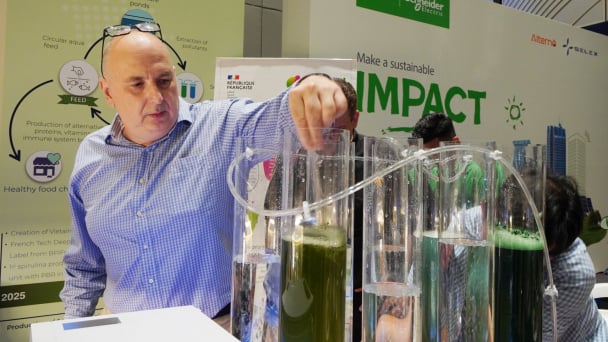
(VAN) On May 27, La French Tech Vietnam (the French startup and innovation community in Vietnam) held the French Tech Summit Vietnam 2025.
/2025/05/27/4731-2-223159_980.jpg)
(VAN) No votive paper, no styrofoam, no plastic bags, no plastic bottles, and no single-use plastic trays are the key rules tourists should keep in mind when visiting Con Dao.
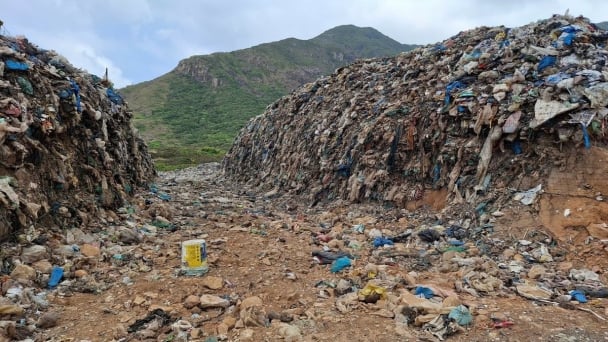
(VAN) In the fight against plastic pollution, Vietnam has been demonstrating a proactive, pioneering, and active role in addressing the greatest environmental challenge today.